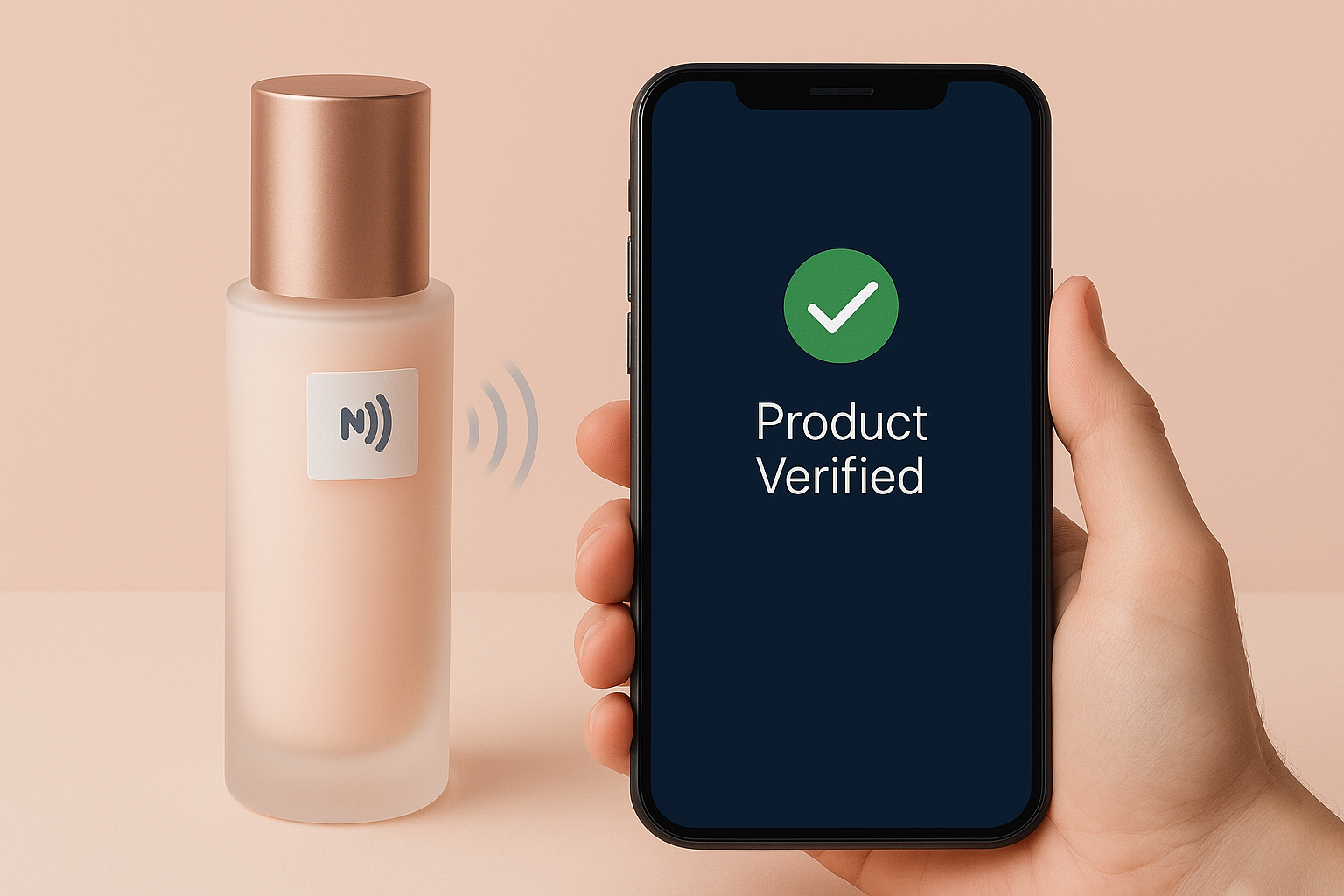July 28, 2025
Over 67% of beauty products on online marketplaces are likely fake—posing serious health risks to millions. From toxic ingredients to skin damage, counterfeit cosmetics are on the rise. Learn how NFC smart label technology from ForgeStop offers real-time protection with tap-to-verify authentication—no app needed.

A recent investigation by Which? has uncovered a troubling reality: over 67% of cosmetics sold through major online marketplaces like Amazon, eBay, TikTok Shop, and Vinted are likely counterfeit. The report—which has been widely covered by outlets such as The Times—tested popular makeup and skincare products purchased online. Many turned out to be fakes.
These findings have raised serious health concerns for millions of consumers and sparked calls for stricter oversight of third-party sellers.
The Which? team ordered 22 products from trusted brands including MAC, Charlotte Tilbury, Maybelline, La Roche-Posay, and The Ordinary.
Laboratory testing revealed that many were counterfeit and often contained banned or hazardous substances such as:
Some products caused visible skin irritation. Others were nearly indistinguishable from the originals—featuring identical logos, packaging shapes, and even scents.
“Consumers shouldn’t have to second-guess whether their moisturizer contains mercury,” one analyst told The Times.
While fake electronics or clothing may disappoint buyers, counterfeit beauty products are a direct health hazard.
Many are manufactured in unregulated conditions—sometimes in home kitchens, garages, or warehouses lacking sanitary standards.
Reported health effects include:
In some cases, long-term exposure to heavy metals found in counterfeit cosmetics has been linked to serious internal health problems.
Online platforms like Amazon and TikTok Shop depend heavily on third-party sellers. Unfortunately, many of these sellers use sophisticated tactics to deceive consumers:
Even when a counterfeit listing is removed, it may reappear within hours—often under a slightly different name. Right now, the burden of proof is on the buyer, not the seller, to determine if a product is authentic.
Raising awareness is critical. Consumers are being urged to:
Still, even vigilant shoppers can be fooled. Today’s counterfeiters use professional-grade printing and packaging machines—making it incredibly difficult to tell the difference between real and fake. For more on spotting fakes in other industries, check out our guide on anti-counterfeit packaging solutions in 2025.
One emerging solution is NFC (Near Field Communication) smart labels—already used in high-risk industries like pharmaceuticals and luxury spirits to fight counterfeiting.
These smart labels are:
ForgeStop, a security tech company working with pharma and alcohol brands, is now partnering with cosmetics manufacturers to bring this technology into beauty products.
Instead of guessing, consumers could simply tap their phone to the product and receive instant confirmation of authenticity, along with ingredient information and safety alerts—no app required. Learn more about how NFC authentication works in our detailed explainer.
The Which? investigation shines a spotlight on a growing crisis. This issue isn’t just about fake lipstick or moisturizers—it’s about consumer health and safety.
As counterfeiters become more advanced, platforms alone won’t be enough. Brands must adopt smarter, more transparent technologies to protect their customers.
And as consumers, we need to stay vigilant, stay informed—and demand products we can trust.
Sources:
https://scholarship.law.unc.edu/